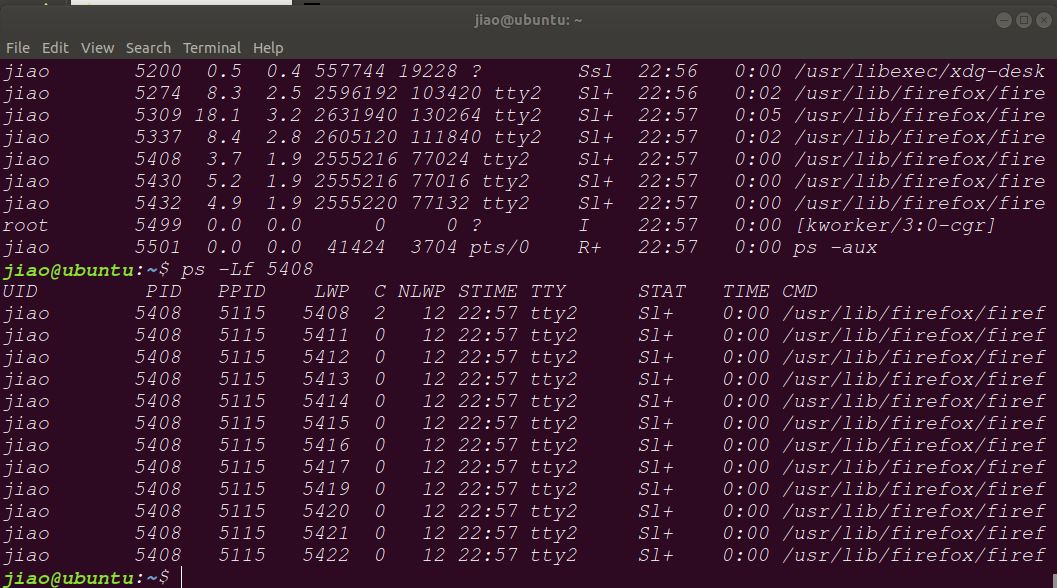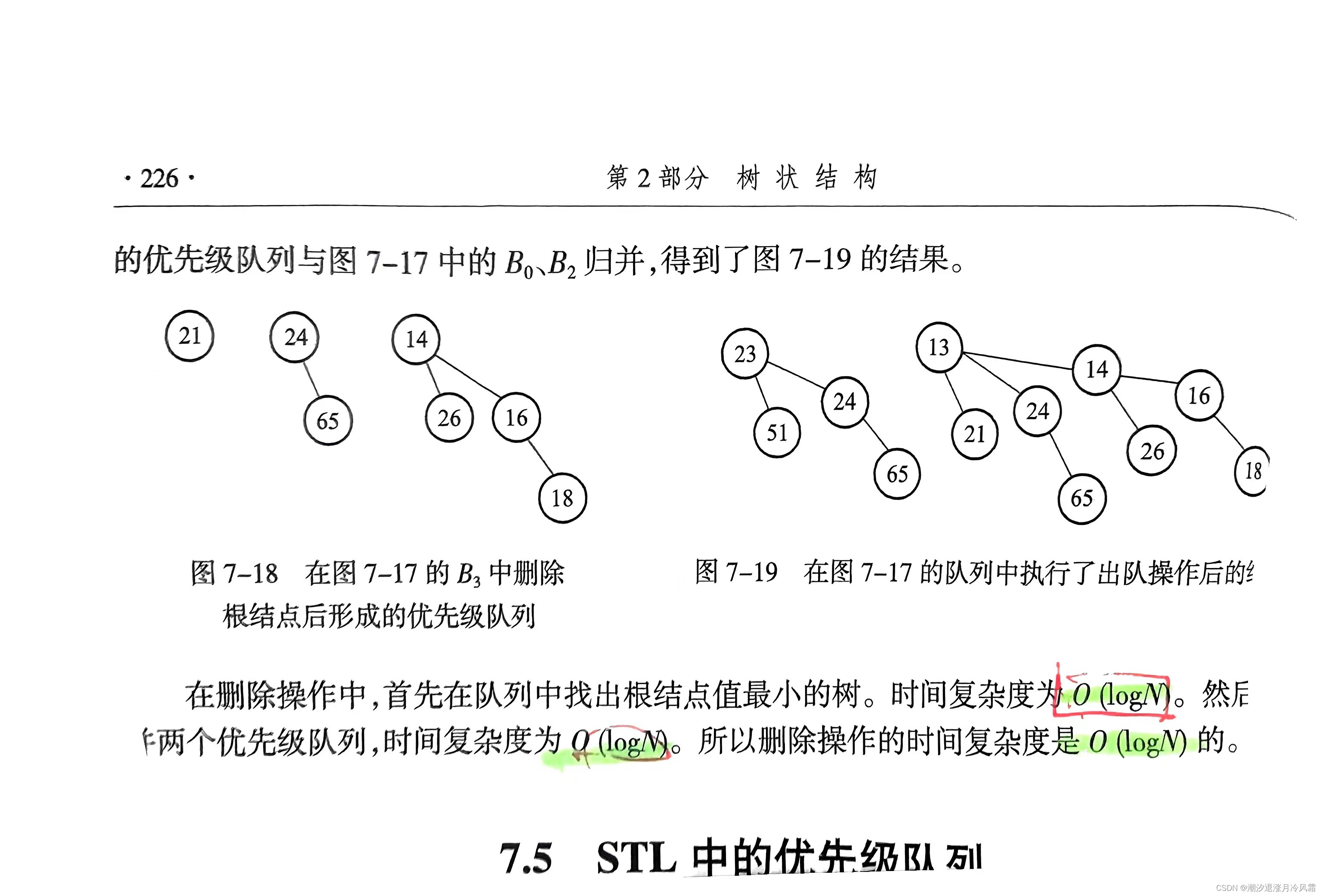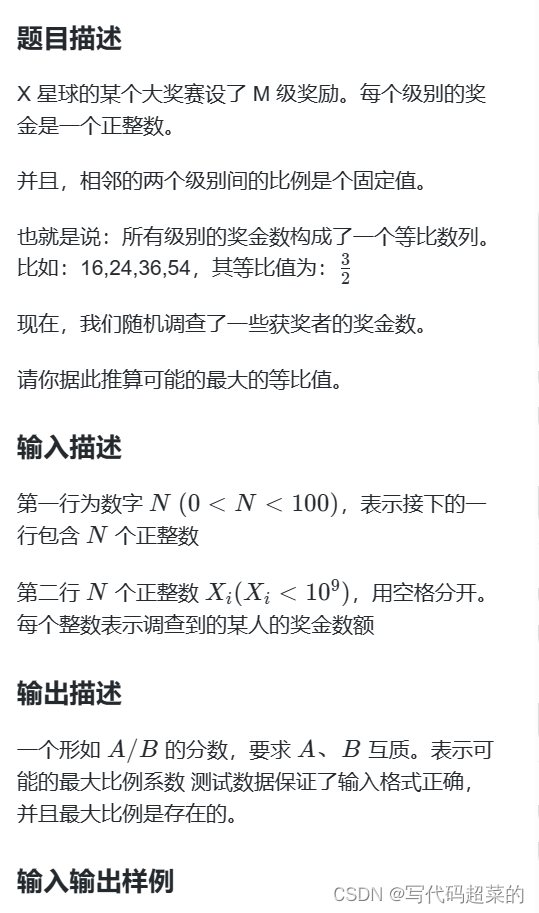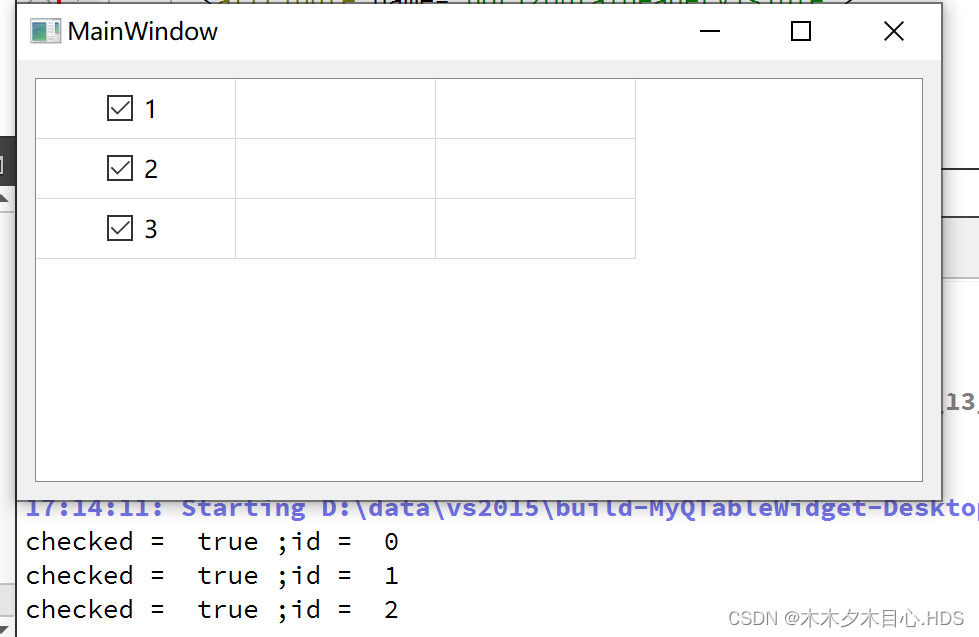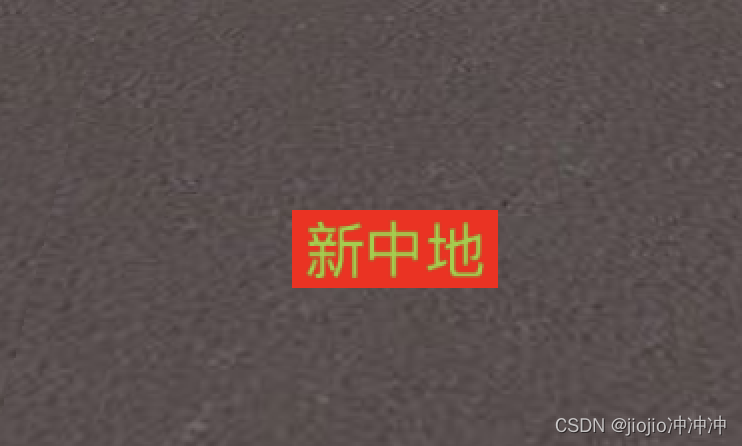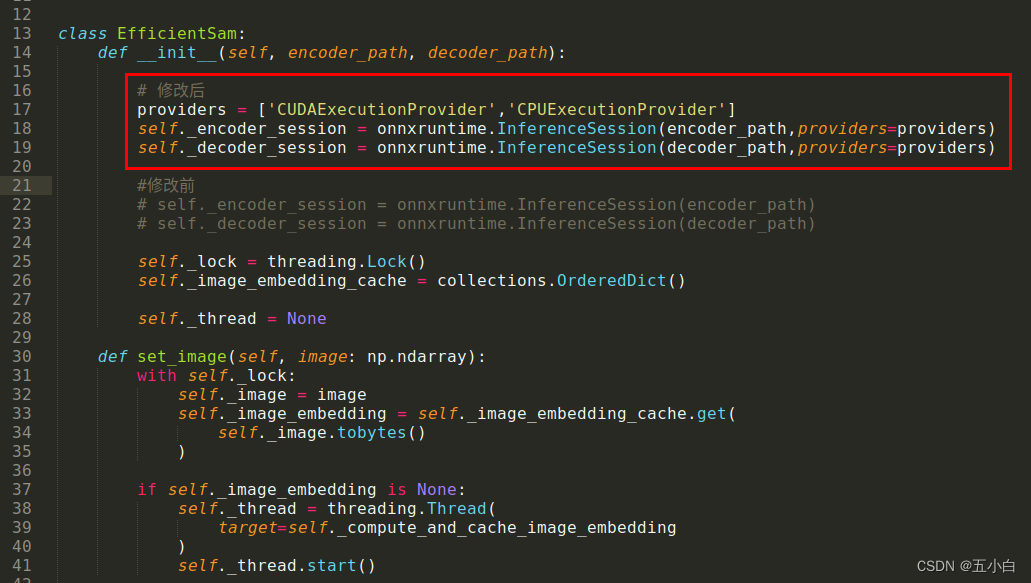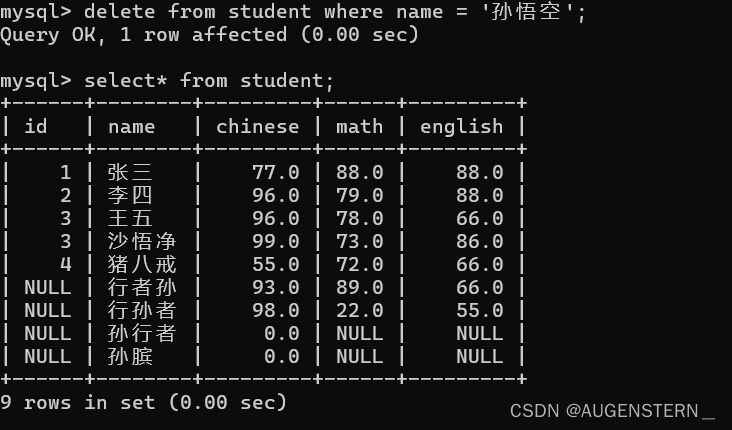线程原理
这一个课程的笔记
LWP:light weight process 轻量级的进程,本质仍是进程(在Linux环境下)
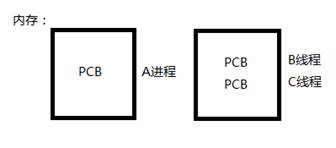
进程:独立地址空间,拥有PCB
线程:有独立的PCB,但没有独立的地址空间(共享)
区别:在于是否共享地址空间。 独居(进程);合租(线程)。
Linux下: 线程:最小的执行单位
进程:最小分配资源单位,可看成是只有一个线程的进程。
可以使用
ps -Lf pid查看一个进程的线程
LWP: 执行的最小单位, 轻量级线程, 实际等于tid
Linux内核线程实现原理
类Unix系统中,早期是没有“线程”概念的,80年代才引入,借助进程机制实现出了线程的概念。因此在这类系统中,进程和线程关系密切。
- 轻量级进程(light-weight process),也有PCB,创建线程使用的底层函数和进程一样,都是clone
- 从内核里看进程和线程是一样的,都有各自不同的PCB,但是PCB中指向内存资源的三级页表是相同的
- 进程可以蜕变成线程
- 线程可看做寄存器和栈的集合
- 在linux下,线程最是小的执行单位;进程是最小的分配资源单位
察看LWP号:ps –Lf pid 查看指定线程的lwp号。
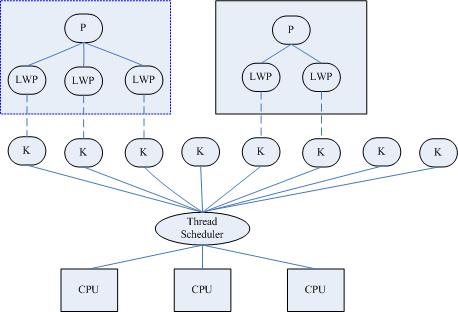
三级映射:进程PCB --> 页目录(可看成数组,首地址位于PCB中) --> 页表 --> 物理页面 --> 内存单元
x86使用页表实现虚拟内存原理分析—使用代码分析-CSDN博客
对于进程来说,相同的地址(同一个虚拟地址)在不同的进程中,反复使用而不冲突。原因是他们虽虚拟址一样,但,页目录、页表、物理页面各不相同。相同的虚拟址,映射到不同的物理页面内存单元,最终访问不同的物理页面。
但!线程不同!两个线程具有各自独立的PCB,但共享同一个页目录,也就共享同一个页表和物理页面。所以两个PCB共享一个地址空间。
实际上,无论是创建进程的fork,还是创建线程的pthread_create,底层实现都是调用同一个内核函数clone。
如果复制对方的地址空间,那么就产出一个“进程”;如果共享对方的地址空间,就产生一个“线程”。
因此:Linux内核是不区分进程和线程的。只在用户层面上进行区分。所以,线程所有操作函数 pthread_* 是库函数,而非系统调用。
线程共享资源
- 文件描述符表
- 每种信号的处理方式 , 这一个信号的处理方式这几个线程都一样, 实际处理的是获取到的那一个, 但是线程的mask不一样, 可以改变mask使得某一个线程处理这一个信号
不推荐线程以及信号混合使用!!!
- 当前工作目录
- 用户ID和组ID
- 内存地址空间 (.text/.data/.bss/heap/共享库), 这一个里面没有栈
线程非共享资源
- 线程id
- 处理器现场和栈指针(内核栈, 用于处理高特权级时候使用)
- 独立的栈空间(用户空间栈, 普通用户使用)
- errno变量, 这是一个全局变量
- 信号屏蔽字
- 调度优先级
线程优、缺点
优点: 1. 提高程序并发性 2. 开销小 3. 数据通信、共享数据方便(全局变量, 堆区, 以及rodata共享, 可以直接使用)
缺点: 1. 库函数,不稳定 2. 调试、编写困难、gdb不支持 3. 对信号支持不好
优点相对突出,缺点均不是硬伤。Linux下由于实现方法导致进程、线程差别不是很大。
线程控制
以下的函数是使用pthread 库进行线程级别的操作。
pthread_self获取线程ID
获取的线程ID是一个posix标准的ID, 只用于这一个进程里面的区分, 这是这一个线程库使用的变量
对应gettid, 这一个tid是进程里面标示身份的, 一个多线程的任务的所有线程的PID是一样的, tid用于区分不同的线程(内核用于时间片轮转), 这一个是系统级的(lwp:轻量级线程, 实际代表的也是这一个)
gettid() returns the caller’s thread ID (TID). In a single-threaded
process, the thread ID is equal to the process ID (PID, as returned by
getpid(2)). In a multithreaded process, all threads have the same PID,
but each one has a unique TID. For further details, see the discussion
of CLONE_THREAD in clone(2).可以使用这一个命令获取TID
The pthread_self() function returns the ID of the calling thread. This
is the same value that is returned in *thread in the pthread_create(3)
call that created this thread.Thread IDs are guaranteed to be unique only within a process. A thread
ID may be reused after a terminated thread has been joined, or a
detached thread has terminated.使用这一个命令获取这一个线程在这一个库里面的编号
pthread_create函数
创建一个新线程。 其作用,对应进程中fork() 函数。
int pthread_create(pthread_t *thread, const pthread_attr_t *attr, void *(*start_routine) (void *), void *arg);
返回值:成功:0; 失败:错误号 -----Linux环境下,所有线程特点,失败均直接返回错误号。
参数:
pthread_t:当前Linux中可理解为:typedef unsigned long int pthread_t;
参数1:传出参数,保存系统为我们分配好的线程ID
参数2:通常传NULL,表示使用线程默认属性。若想使用具体属性也可以修改该参数。设置这一个线程的优先级, 线程的栈空间大小
The attr argument points to a pthread_attr_t structure whose contents
are used at thread creation time to determine attributes for the new
thread; this structure is initialized using pthread_attr_init(3) and
related functions. If attr is NULL, then the thread is created with
default attributes.这一个参数使用pthread_attr_init这一个函数
参数3:函数指针,指向线程主函数(线程体),该函数运行结束,则线程结束
参数4:线程主函数执行期间所使用的参数
在一个线程中调用pthread_create()创建新的线程后,当前线程从pthread_create()返回继续往下执行,而新的线程所执行的代码由我们传给pthread_create的函数指针start_routine决定。
start_routine函数接收一个参数,是通过pthread_create的arg参数传递给它的,该参数的类型为void *,这个指针按什么类型解释由调用者自己定义。start_routine的返回值类型也是void *,这个指针的含义同样由调用者自己定义。start_routine返回时,这个线程就退出了,其它线程可以调用pthread_join得到start_routine的返回值,类似于父进程调用wait(2)得到子进程的退出状态,稍后详细介绍pthread_join。
pthread_create成功返回后,新创建的线程的id被填写到thread参数所指向的内存单元。我们知道进程id的类型是pid_t,每个进程的id在整个系统中是唯一的,调用getpid(2)可以获得当前进程的id,是一个正整数值。线程id的类型是thread_t,它只在当前进程中保证是唯一的,在不同的系统中thread_t这个类型有不同的实现,它可能是一个整数值,也可能是一个结构体,也可能是一个地址,所以不能简单地当成整数用printf打印,调用pthread_self(3)可以获得当前线程的id。
attr参数表示线程属性,本节不深入讨论线程属性,所有代码例子都传NULL给attr参数,表示线程属性取缺省值,感兴趣的读者可以参考APUE。
示例
#include <stdio.h>
#include <stdlib.h>
#include <unistd.h>
#include <errno.h>
#include <pthread.h>
#include <sys/types.h>
#include <string.h>
void *thread_handler(void *arg){
printf("-----------thread------------\n");
printf("pid = %d, swl = %ld\n",
getpid(), pthread_self());
return NULL;
}
int main(void){
pthread_t tid;
tid = pthread_self();
printf("main pid = %d swl = %ld \n", getpid(), tid);
int ret = pthread_create(&tid, NULL, thread_handler, NULL);
if(ret != 0){
printf("pthreat creat error, %d = %s\n", ret, strerror(ret));
exit(0);
}
printf("tid now = %ld\n", tid);
sleep(1);
return 0;
}
由于pthread_create的错误码不保存在errno中,因此不能直接用perror(3)打印错误信息,可以先用strerror(3)把错误码转换成错误信息再打印。
如果任意一个线程调用了exit或_exit,则整个进程的所有线程都终止,由于从main函数return也相当于调用exit,为了防止新创建的线程还没有得到执行就终止
创建的线程的return实际效果是执行pthread_exit返回这一个返回值, main返回实际会结束这一个线程组, 相当于exit
线程属性
linux下线程的属性是可以根据实际项目需要,进行设置,之前我们讨论的线程都是采用线程的默认属性,默认属性已经可以解决绝大多数开发时遇到的问题。如我们对程序的性能提出更高的要求那么需要设置线程属性,比如可以通过设置线程栈的大小来降低内存的使用,增加最大线程个数。
typedef struct
{
int etachstate; //线程的分离状态
int schedpolicy; //线程调度策略
struct sched_param schedparam; //线程的调度参数
int inheritsched; //线程的继承性
int scope; //线程的作用域
size_t guardsize; //线程栈末尾的警戒缓冲区大小
int stackaddr_set; //线程的栈设置
void* stackaddr; //线程栈的位置
size_t stacksize; //线程栈的大小
} pthread_attr_t;
这是一个比较早的版本
主要结构体成员:
- 线程分离状态
- 线程栈大小(默认平均分配)
- 线程栈警戒缓冲区大小(位于栈末尾) 参 APUE.12.3 线程属性
属性值不能直接设置,须使用相关函数进行操作,初始化的函数为pthread_attr_init,这个函数必须在pthread_create函数之前调用。之后须用pthread_attr_destroy函数来释放资源。
线程属性主要包括如下属性:作用域(scope)、栈尺寸(stack size)、栈地址(stack address)、优先级(priority)、分离的状态(detached state)、调度策略和参数(scheduling policy and parameters)。默认的属性为非绑定、非分离、缺省的堆栈、与父进程同样级别的优先级。
线程属性初始化
注意:应先初始化线程属性,再pthread_create创建线程
初始化线程属性
int pthread_attr_init(pthread_attr_t *attr); 成功:0;失败:错误号
销毁线程属性所占用的资源
int pthread_attr_destroy(pthread_attr_t *attr); 成功:0;失败:错误号
线程的分离状态
线程的分离状态决定一个线程以什么样的方式来终止自己。
非分离状态:线程的默认属性是非分离状态,这种情况下,原有的线程等待创建的线程结束。只有当pthread_join()函数返回时,创建的线程才算终止,才能释放自己占用的系统资源。
分离状态:分离线程没有被其他的线程所等待,自己运行结束了,线程也就终止了,马上释放系统资源。应该根据自己的需要,选择适当的分离状态。
线程分离状态的函数:
设置线程属性,分离or非分离
int pthread_attr_setdetachstate(pthread_attr_t *attr, int detachstate);
获取程属性,分离or非分离
int pthread_attr_getdetachstate(pthread_attr_t *attr, int *detachstate);
参数: attr:已初始化的线程属性
detachstate: PTHREAD_CREATE_DETACHED(分离线程)
PTHREAD _CREATE_JOINABLE(非分离线程)
这里要注意的一点是,如果设置一个线程为分离线程,而这个线程运行又非常快,它很可能在pthread_create函数返回之前就终止了,它终止以后就可能将线程号和系统资源移交给其他的线程使用,这样调用pthread_create的线程就得到了错误的线程号。要避免这种情况可以采取一定的同步措施,最简单的方法之一是可以在被创建的线程里调用pthread_cond_timedwait函数,让这个线程等待一会儿,留出足够的时间让函数pthread_create返回。设置一段等待时间,是在多线程编程里常用的方法。但是注意不要使用诸如wait()之类的函数,它们是使整个进程睡眠,并不能解决线程同步的问题。
示例1: 使用属性设置是否分离
#include <stdio.h>
#include <stdlib.h>
#include <unistd.h>
#include <errno.h>
#include <pthread.h>
#include <string.h>
void *pthread_func(void *arg){
printf("pthread_func\n");
return (void *)0x1234;
}
int main(void){
pthread_t tid;
pthread_attr_t attr;
int ret;
ret = pthread_attr_init(&attr);
if(ret != 0){
printf("pthread_attr_init %s\n", strerror(ret));
exit(1);
}
ret = pthread_attr_setdetachstate(&attr, PTHREAD_CREATE_DETACHED);
if(ret != 0){
printf("pthread_attr_setdetachstate %s\n", strerror(ret));
exit(1);
}
ret = pthread_create(&tid, &attr, (void *)pthread_func, NULL);
if(ret != 0){
printf("pthread_create %s\n", strerror(ret));
exit(1);
}
....
}
设置一个分离属性
示例2: 使用属性设置栈大小
#include <pthread.h>
#define SIZE 0x100000
void *th_fun(void *arg)
{
while (1)
sleep(1);
}
int main(void)
{
pthread_t tid;
int err, detachstate, i = 1;
pthread_attr_t attr;
size_t stacksize;
void *stackaddr;
pthread_attr_init(&attr);
pthread_attr_getstack(&attr, &stackaddr, &stacksize);//获取现在的栈的状态
pthread_attr_getdetachstate(&attr, &detachstate);//获取这一个线程的线程是否分离
if (detachstate == PTHREAD_CREATE_DETACHED)
printf("thread detached\n");
else if (detachstate == PTHREAD_CREATE_JOINABLE)
printf("thread join\n");
else
printf("thread unknown\n");
pthread_attr_setdetachstate(&attr, PTHREAD_CREATE_DETACHED);//设置属性的状态
while (1) {
stackaddr = malloc(SIZE);//获取一块新的栈
if (stackaddr == NULL) {
perror("malloc");
exit(1);
}
stacksize = SIZE;
pthread_attr_setstack(&attr, stackaddr, stacksize);//设置这一个新的栈
err = pthread_create(&tid, &attr, th_fun, NULL);
if (err != 0) {
printf("%s\n", strerror(err));
exit(1);
}
printf("%d\n", i++);
}
pthread_attr_destroy(&attr);
return 0;
}
pthread_exit线程的退出
将单个线程退出
void pthread_exit(void *retval); 参数:retval表示线程退出状态,通常传NULL
结论:线程中,禁止使用exit函数,会导致进程内所有线程全部退出。
在不添加sleep控制输出顺序的情况下。pthread_create在循环中,几乎瞬间创建5个线程,但只有第1个线程有机会输出(或者第2个也有,也可能没有,取决于内核调度)如果第3个线程执行了exit,将整个进程退出了,所以全部线程退出了。
所以,多线程环境中,应尽量少用,或者不使用exit函数,取而代之使用pthread_exit函数,将单个线程退出。任何线程里exit导致进程退出,其他线程未工作结束,主控线程退出时不能return或exit。
注意,pthread_exit或者return返回的指针所指向的内存单元必须是全局的或者是用malloc分配的,不能在线程函数的栈上分配,因为当其它线程得到这个返回指针时线程函数已经退出了。
#include <stdio.h>
#include <stdlib.h>
#include <unistd.h>
#include <errno.h>
#include <pthread.h>
#include <sys/types.h>
#include <string.h>
void *thread_handler(void *arg){
if((long)arg == 3){
pthread_exit((void *)0);//可以单独退出某一个线程
}
printf("-----------thread%ld------------\n", (long)arg);
printf("pid = %d, swl = %ld\n",
getpid(), pthread_self());
return NULL;
}
int main(void){
pthread_t tid;
tid = pthread_self();
printf("main pid = %d swl = %ld \n", getpid(), tid);
for(long i = 0 ; i < 5 ;i ++){
int ret = pthread_create(&tid, NULL, thread_handler, (void *)i);
if(ret != 0){
printf("pthreat creat error, %d = %s\n", ret, strerror(ret));
exit(0);
}
}
printf("parent pid = %d tid now = %ld\n",getpid(), tid);
//return 0;
pthread_exit((void *)0);//这个时候不需要sleep了
}
pthread_join获取返回值
阻塞等待线程退出,获取线程退出状态 其作用,对应进程中 waitpid() 函数。
int pthread_join(pthread_t thread, void **retval); 成功:0;失败:错误号
参数:thread:线程ID (【注意】:不是指针);retval:存储线程结束状态。
#include <stdio.h>
#include <pthread.h>
#include <stdlib.h>
#include <unistd.h>
#include <errno.h>
#include <string.h>
struct thrd {
int val;
char str[256];
};
void * tfn(void *arg){
struct thrd *tval;//初始化一块结构体
tval = malloc(sizeof(struct thrd));
tval->val = 100;
strcpy(tval->str, "hello world");
return (void *)tval;
}
int main(void){
pthread_t tid;
int ret = pthread_create(&tid, NULL, tfn, NULL);
if(ret != 0){
printf("pthread creat error %d :%s", ret, strerror(ret));
exit(1);
}
void *retval;
ret = pthread_join(tid, &retval);//获取这一个的信息
if(ret != 0){
printf("pthread join error %d :%s", ret, strerror(ret));
exit(1);
}
printf("get thread ret : %d %s\n", ((struct thrd*)retval)->val,
((struct thrd*)retval)->str);//打印信息
free(retval);
pthread_exit(NULL);
return 0;
}
回收多个进程的时候需要使用数组
pthread_detach线程的分离
int pthread_detach(pthread_t thread); 成功:0;失败:错误号
线程分离状态:指定该状态,线程主动与主控线程断开关系。线程结束后,其退出状态不由其他线程获取,而直接自己自动释放。网络、多线程服务器常用。
进程若有该机制,将不会产生僵尸进程。僵尸进程的产生主要由于进程死后,大部分资源被释放,一点残留资源仍存于系统中,导致内核认为该进程仍存在。
也可使用 pthread_create函数参2(线程属性)来设置线程分离。
#include <stdio.h>
#include <pthread.h>
#include <stdlib.h>
#include <unistd.h>
#include <errno.h>
#include <string.h>
struct thrd {
int val;
char str[256];
};
void * tfn(void *arg){
struct thrd *tval;
tval = malloc(sizeof(struct thrd));
tval->val = 100;
strcpy(tval->str, "hello world");
return (void *)tval;
}
int main(void){
pthread_t tid;
int ret = pthread_create(&tid, NULL, tfn, NULL);
if(ret != 0){
printf("pthread creat error %d :%s", ret, strerror(ret));
exit(1);
}
ret = pthread_detach(tid); //进行分离
if(ret != 0){
printf("pthread detach error %d :%s", ret, strerror(ret));
exit(1);
}
void *retval;
ret = pthread_join(tid, &retval); //获取这一个线程的返回值, 这个时候已经分离了, 会失败
if(ret != 0){
printf("pthread join error %d :%s", ret, strerror(ret));
exit(1);
}
printf("get thread ret : %d %s\n", ((struct thrd*)retval)->val,
((struct thrd*)retval)->str);
pthread_exit(NULL);
free(retval);
return 0;
}

pthread_cancel函数
杀死(取消)线程 其作用,对应进程中 kill() 函数。
int pthread_cancel(pthread_t thread); 成功:0;失败:错误号
【注意】:线程的取消并不是实时的,而有一定的延时。需要等待线程到达某个取消点(检查点)。类似于玩游戏存档,必须到达指定的场所(存档点,如:客栈、仓库、城里等)才能存储进度。杀死线程也不是立刻就能完成,必须要到达取消点。
取消点:是线程检查是否被取消,并按请求进行动作的一个位置。通常是一些系统调用creat,open,pause,close,read,write… 执行命令man 7 pthreads可以查看具备这些取消点的系统调用列表。也可参阅 APUE.12.7 取消选项小节。可粗略认为一个系统调用(进入内核)即为一个取消点。如线程中没有取消点,可以通过调用pthread_testcancel函数自行设置一个取消点。
被取消的线程, 退出值定义在Linux的pthread库中。常数PTHREAD_CANCELED的值是-1。可在头文件pthread.h中找到它的定义:**#define PTHREAD_CANCELED ((void *) -1)****。**因此当我们对一个已经被取消的线程使用pthread_join回收时,得到的返回值为-1。
#include <stdio.h>
#include <pthread.h>
#include <stdlib.h>
#include <unistd.h>
#include <errno.h>
#include <string.h>
void * tfn(void *arg){
while(1){
printf("thread pid = %d, tid = %lu\n", getpid(), pthread_self());
sleep(1);
}
return NULL;
}
int main(void){
pthread_t tid;
int ret = pthread_create(&tid, NULL, tfn, NULL);
if(ret != 0){
printf("pthread creat error %d :%s", ret, strerror(ret));
exit(1);
}
printf("main pid = %d, tid = %lu\n", getpid(), pthread_self());
sleep(5);
ret = pthread_cancel(tid);
if(ret != 0){
exit(1);
}
while(1);
}

if the target
thread was canceled, then PTHREAD_CANCELED is placed in the location
pointed to by retval这一个进程使用pthread_join回收的值是-1
long retv; pthread_join(tid, (void **)&retv); printf("ret = %ld\n", retv);
**注: **
如果这一个子线程使用的是一个while(1);之类的死循环是无法退出的, 因为没有取消点(进入内核)
#include <stdio.h> #include <pthread.h> #include <stdlib.h> #include <unistd.h> #include <errno.h> #include <string.h> void * tfn(void *arg){ while(1){ } return NULL; } int main(void){ pthread_t tid; int ret = pthread_create(&tid, NULL, tfn, NULL); if(ret != 0){ printf("pthread creat error %d :%s", ret, strerror(ret)); exit(1); } printf("main pid = %d, tid = %lu\n", getpid(), pthread_self()); sleep(5); ret = pthread_cancel(tid); if(ret != 0){ exit(1); } long retv; pthread_join(tid, (void **)&retv);//会在这里卡死 printf("ret = %ld\n", retv); }可以使用函数pthread_testcancel添加一个取消点
while(1){ pthread_testcancel(); }
总结
和进程对比
| 线程 | 进程 |
|---|---|
| pthread_create | fork |
| pthread_self | getpid |
| pthread_exit | exit |
| pthread_join | wait/waitpid |
| pthread_cancel | kill |
| pthread_detach | 无 |
终止线程方式
总结:终止某个线程而不终止整个进程,有三种方法:
- 从线程主函数return。这种方法对主控线程不适用,从main函数return相当于调用exit。
- 一个线程可以调用pthread_cancel终止同一进程中的另一个线程。
- 线程可以调用pthread_exit终止自己。
线程使用注意事项
- 主线程退出其他线程不退出,主线程应调用pthread_exit
- 避免僵尸线程
pthread_join
pthread_detach
pthread_create指定分离属性
被join线程可能在join函数返回前就释放完自己的所有内存资源,所以不应当返回被回收线程栈中的值;
- malloc和mmap申请的内存可以被其他线程释放
- 应避免在多线程模型中调用fork除非,马上exec,子进程中只有调用fork的线程存在,其他线程在子进程中均pthread_exit
- 信号的复杂语义很难和多线程共存,应避免在多线程引入信号机制
